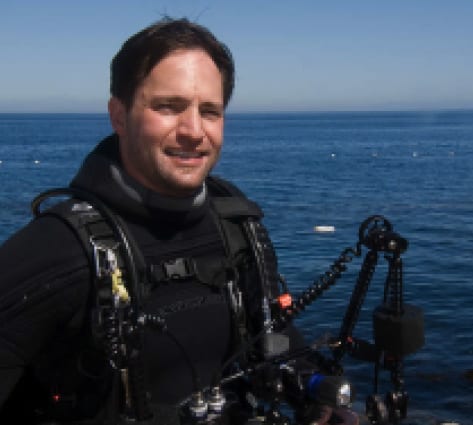A big shout out to G and Lisa for being amazing cruise directors. Crew: BEST CREW!!! Idy is the greatest divemaster we had the pleasure to dive with. He is attentive, safety orientated and knowledgeable. Anto and Kadek made our dining experience a total joy. Food: Excellent, very yummy! The kitchen staff was wonderful even about little things like no garlic in my vegetables ;)
BIOGRAPHY / Matt Meier

Matthew is a professional underwater, nature and travel photographer based in San Diego, California.
Matthew studied commercial photography at the Brooks Institute of Photography in Santa Barbara, California, completing their Masters program. His work has appeared in magazines, books, in museums and as fine art prints.
For the past several years, Matthew has served as an editor and rep for X-Ray Magazine, an International Scuba Diving publication, often traveling to photograph and write travel stories for the magazine.
His latest story on diving in Cuba may be viewed with THIS LINK.
- For a sampling of Matt’s work, visit WWW.matthewmeierphoto.com.COM
- Keep up to date with this specific trip at our FACEBOOK EVENT PAGE
CRUISE OVERVIEW
Set sail from Sorong at the western edge of Papua, for a 14-day/13-night cruise, ending back in Sorong. Take in all the popular dive sites of Raja Ampat, in all its colourful glory, as well as the less visited dive sites of Triton Bay.
As many divers know, Indonesia is located in the very centre of the Coral Triangle and the variety of species seen underwater is truly astonishing. In certain bays and around small islands, you can find more species than in the entire Caribbean. In Raja Ampat, Gerald Allen (world-famous ichthyologist) counted the incredible number of 284 different species of fish during a single dive. In the same area, 465 different species of corals were found. As a result, scientists nowadays believe that this destination is the world’s current no. 1 spot in terms of biodiversity.
Raja Ampat offers the most striking biodiversity on the planet. Famous dive sites such as Misool, Dampier Strait, Manta Sandy and Boo are all on the agenda. This area is known for its vibrant underwater colours but also its majestic landscapes, making it a perfect destination for keen photographers. The only problem with diving here is that you’ll be so spoiled by the near-perfect conditions that you may never want to leave.
Still in West Papua, but further south from Sorong, is the Triton Bay area. As a relatively new spot for diving, there’s no risk of overcrowding at these dive sites. The reefs are stunning, packed with vibrant varied corals and the fish life is incredible with big schools. It’s common to feel like you’re the first diver these fish have ever seen and being surrounded by so much fish life will be a truly unforgettable experience. At many sites you’ll find expansive black coral forests and it’s quite common to find the famous ‘walking shark’ here as well as wobbgegongs.
As a hotspot for critters, due to nutrient-rich waters, the visibility in Triton Bay can be a bit unpredictable but with so many sites to choose from we can tailor out time in the area to suit the best spots. The area is also a good chance to see dolphins and even sometimes whales, as they pass by the Gulf of Triton. Two of the popular Triton Bay dive sites (both named after the famous dive explorer Larry Smith) are called Larry’s Heaven and Little Komodo, giving you some idea of how impressed he was with the area’s dive potential.
In terms of water temperature and recommendations for wetsuits, for most dive sites in Raja Ampat you can expect 27-30C+ (80-86F+) so a 3mm wetsuit or even a skinsuit is usually fine. For repetitive diving days you may start to notice the cooler thermoclines more than usual, so prefer to wear a slightly thicker wetsuit and/or a hood, but usually 3-5mm is sufficient. We don’t recommend gloves as this can encourage divers to touch corals or delicate reef areas, but for night dives, where you could be more likely to bump into fire coral etc, many divers do prefer earning a full length suit and hood/gloves.